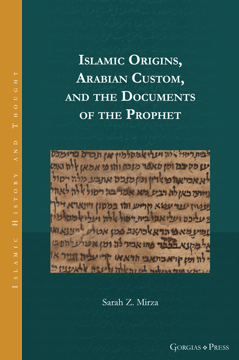Sarah Z. Mirza

Sarah Z. Mirza is Associate Professor of Religious Studies at the College of Wooster.
Islamic Origins, Arabian Custom, and the Documents of the Prophet
Series: Islamic History and Thought 17
ISBN: 978-1-4632-0644-4
Early Islamic historical literature attributes several hundred pragmatic documents to the Prophet Muḥammad. The consistent use of epistolary and legal formulae, which are found only in these documents, encourages us to treat these texts as a corpus. In addition to consistent terminology, formulaic structure, and formulae, these texts show remarkable stability through transmission. A comparison of these texts with Umayyad and ʿAbbasid papyri reveals that the Prophet's documents reflect obsolete or otherwise unattested formulae. This study will demonstrate through three case studies the particular functions of these documents in the history of social relations in late antique Arabia.
$149.50 (USD) $119.60 (USD)

